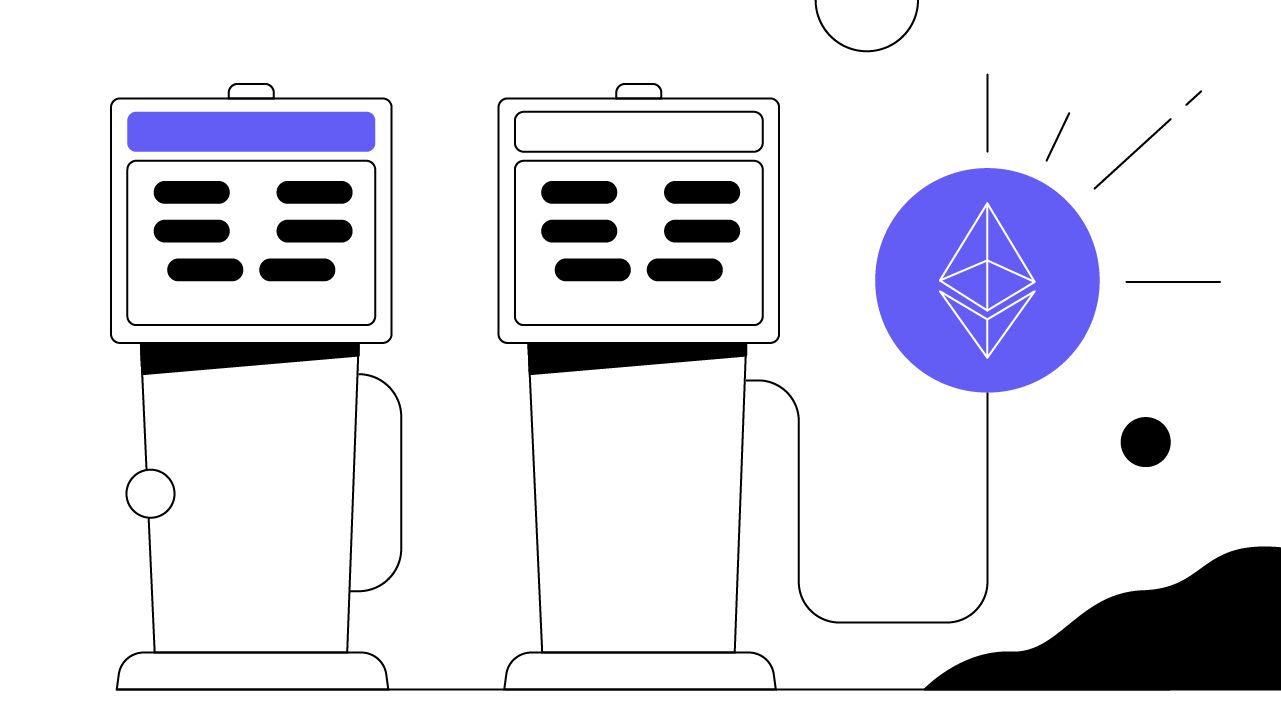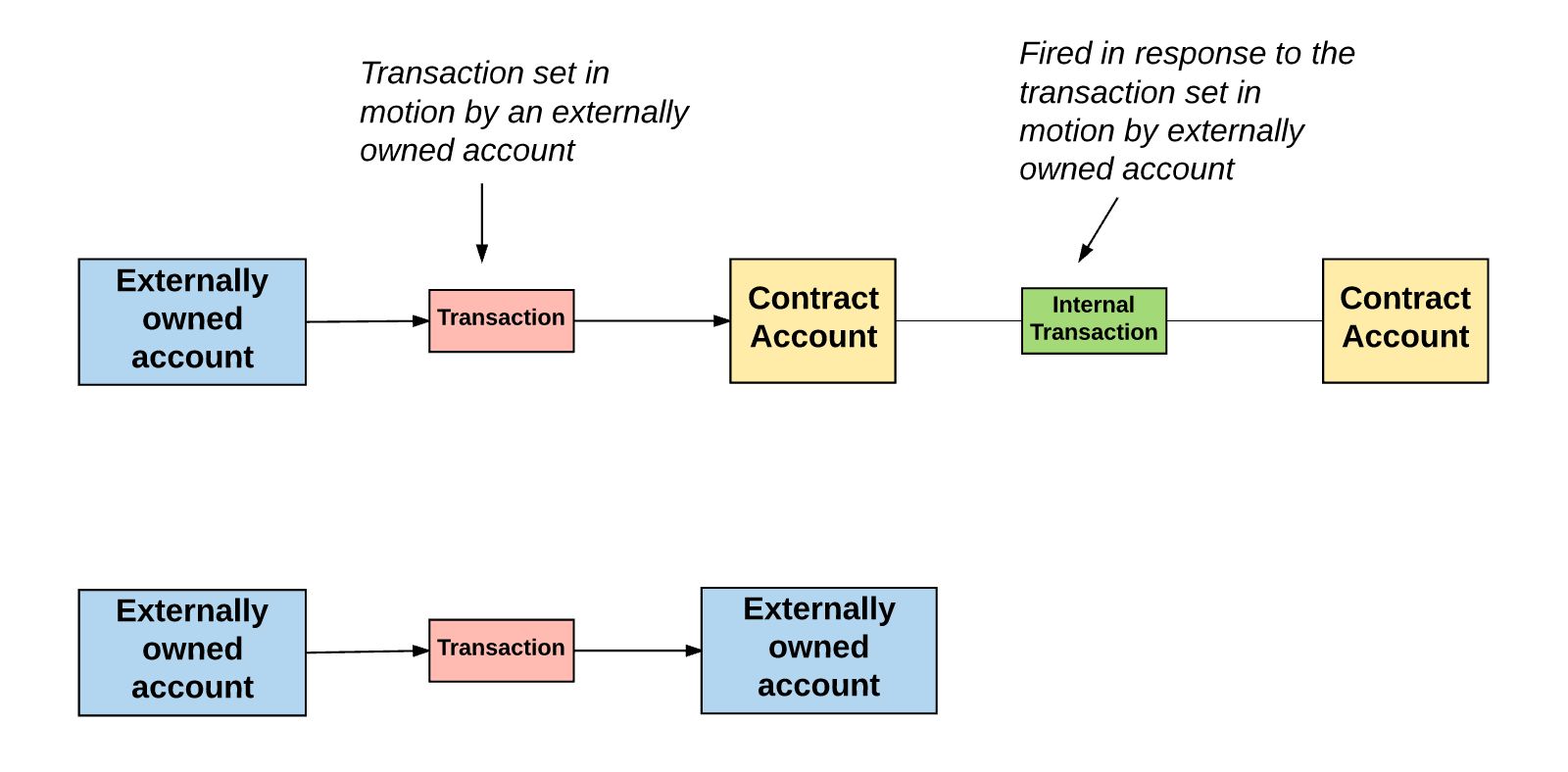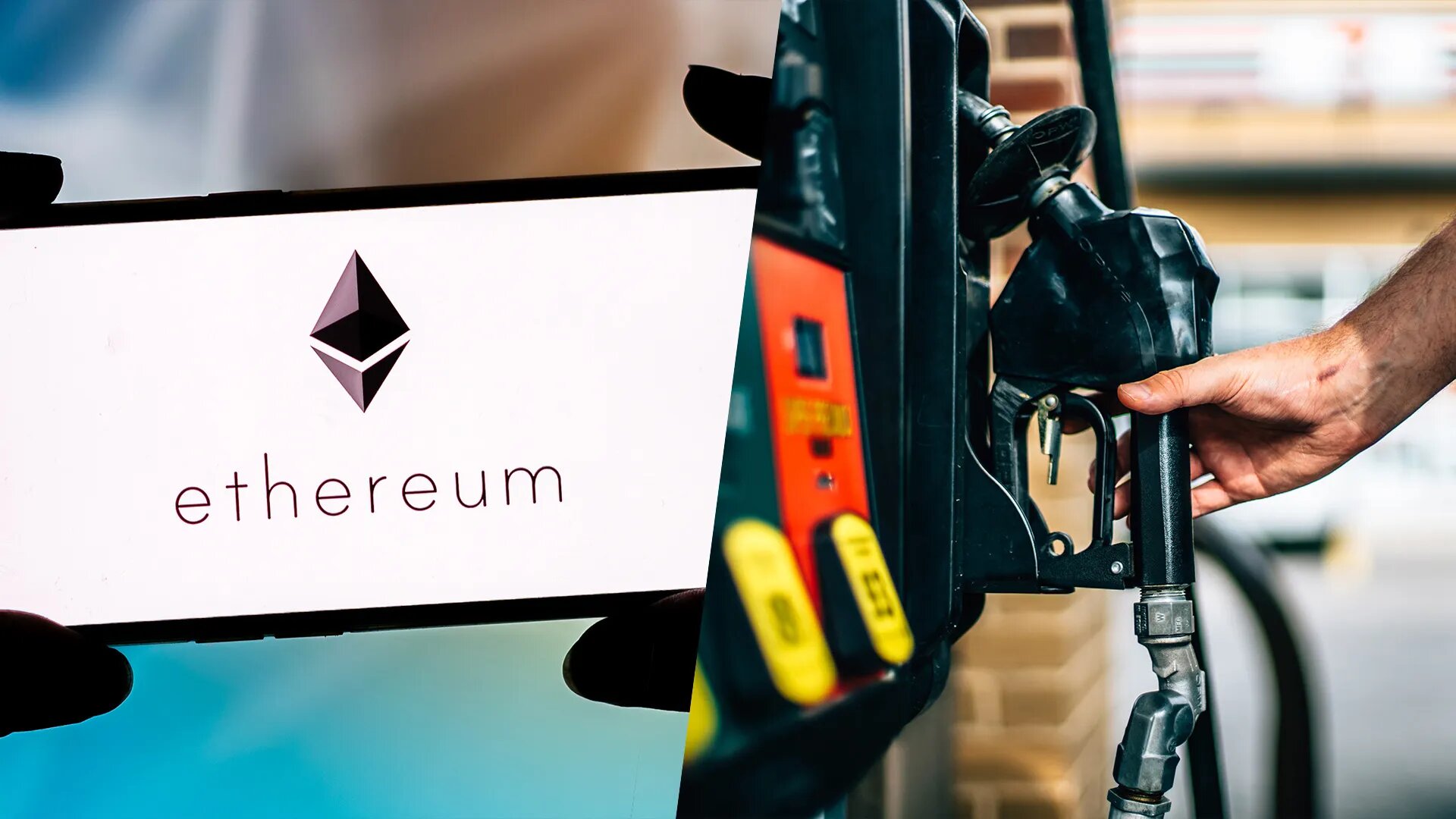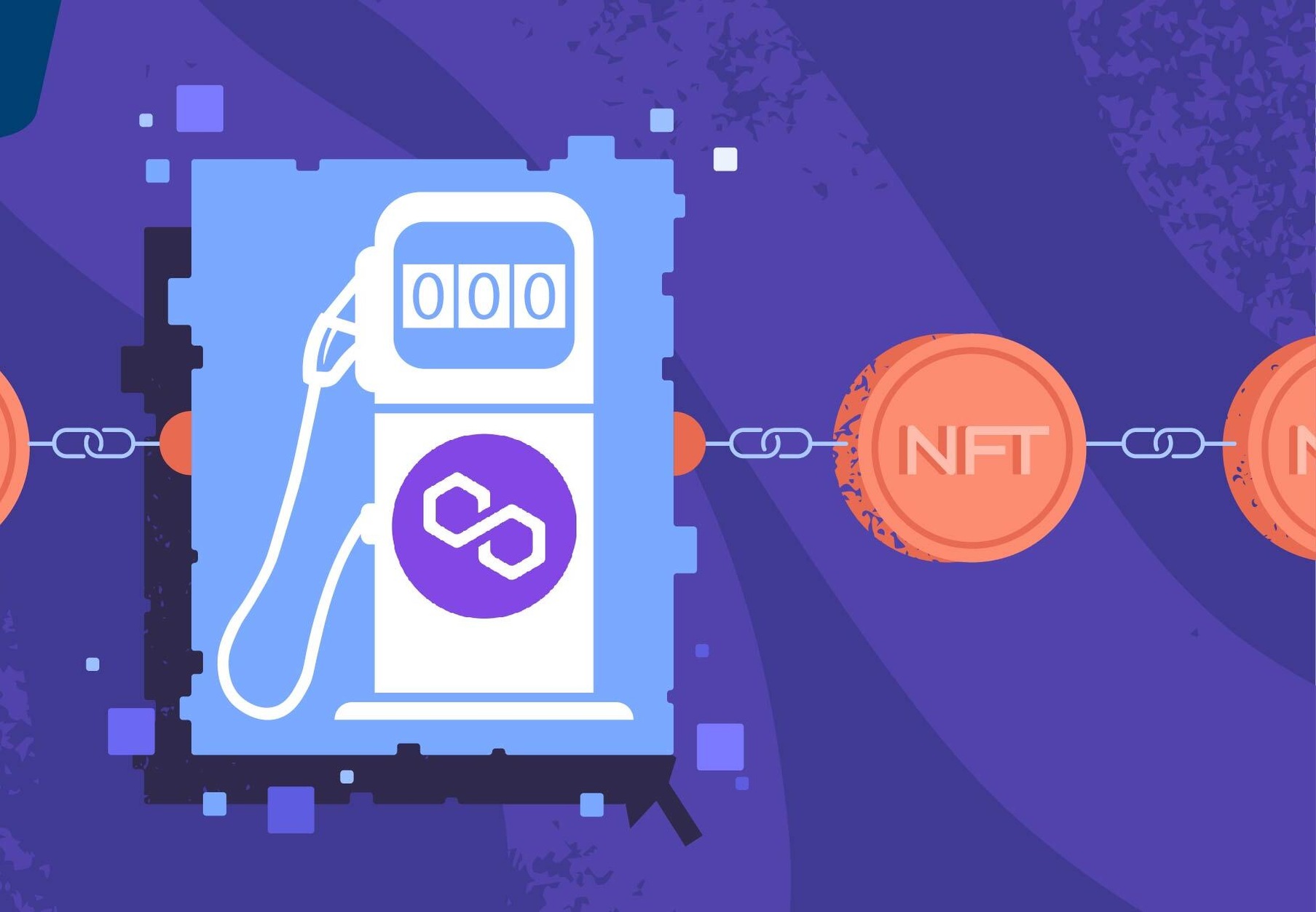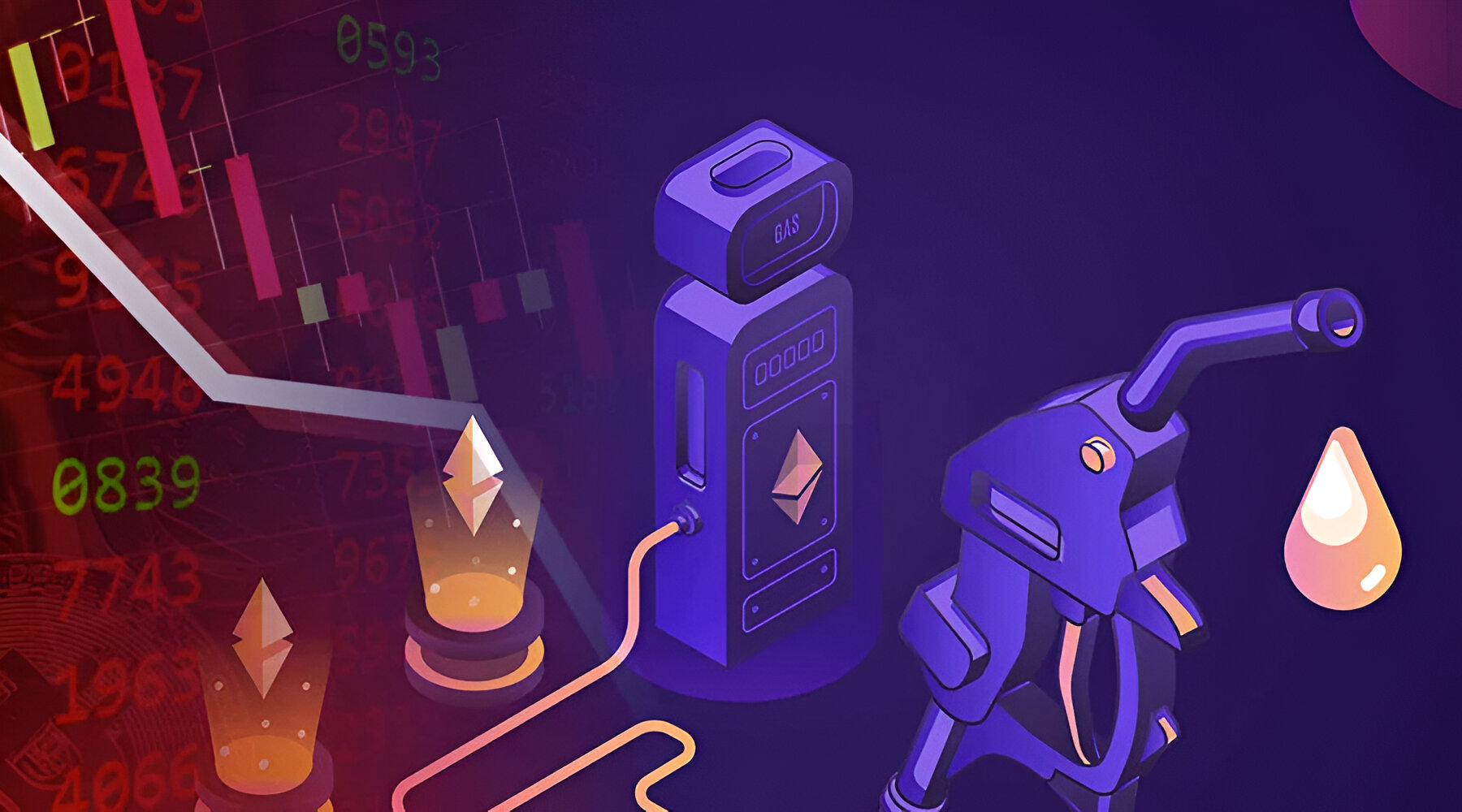What is Gas in Blockchain?
In the world of blockchain technology, understanding the concept of “gas” is essential, especially for those involved in Ethereum. Gas is a vital component of the Ethereum blockchain, serving an important role in executing and validating transactions.
In simple terms, gas refers to the measure of computational effort required to perform specific actions on the Ethereum network. Whenever a transaction or smart contract is executed, it consumes a certain amount of gas. This gas is essential to ensure that the Ethereum network operates smoothly and remains secure from malicious activities.
Gas acts as a fee or unit of account for the computational work required to execute a transaction. It prevents misuse of resources, such as spamming the network with unnecessary or inefficient code. Essentially, it ensures that the blockchain network is utilized efficiently and maintains its scalability.
Gas is measured in small units called “Gwei,” which is a sub-unit of Ether (ETH). Each operation or instruction in a smart contract has a predefined gas cost associated with it. For example, sending Ether from one account to another may require a specific amount of gas, while executing a complex smart contract may consume more gas due to the computational complexity involved.
Gas fees play a crucial role in prioritizing transactions on the Ethereum network. Miners, who validate and add transactions to the blockchain, are incentivized to process transactions with higher gas fees. This incentivization ensures that miners prioritize transactions based on their gas fees, promoting faster and more reliable transaction processing.
It’s important to note that gas fees are not fixed and can vary depending on various factors, such as network congestion and the complexity of the transaction. Users have the flexibility to set their preferred gas price and gas limit, which determines the maximum amount of gas they are willing to pay and consume for a transaction.
Gas fees play a crucial role in maintaining the integrity and efficiency of the Ethereum blockchain. They serve as a mechanism to prevent resource abuse, prioritize transactions, and ensure the security of the network. Without gas, the Ethereum network would be vulnerable to congestion, spam attacks, and inefficient code execution.
Understanding the concept of gas is essential for anyone navigating the world of blockchain and Ethereum. By grasping the importance of gas, users can make informed decisions when setting gas fees, managing their transactions, and optimizing their interaction with the Ethereum network.
Understanding Gas in Ethereum
Gas is a fundamental concept in the Ethereum blockchain that plays a crucial role in executing transactions and running smart contracts. To understand gas, it’s important to first grasp the concept of the Ethereum Virtual Machine (EVM), which is the decentralized computer that processes transactions on the Ethereum network.
The EVM is a Turing-complete virtual machine, meaning it can execute any arbitrary algorithm given enough computational resources. However, to prevent abuse and ensure the network’s efficiency, each operation performed on the EVM requires a specific amount of gas.
Gas serves as a measure of computation and resource consumption. When a transaction or smart contract is executed, it consumes a specific amount of gas based on the complexity of the operation. For example, a simple transfer of Ether may only consume a small amount of gas, while executing a complex smart contract with multiple calculations and interactions can consume much more.
The concept of gas allows Ethereum to have a fee market, where users pay for the computational resources they utilize. Each operation within a transaction has a predefined gas cost associated with it, which is multiplied by the gas price to determine the total transaction fee.
Gas fees in Ethereum are denominated in Gwei, which is a subunit of ETH. The gas price represents the amount of Gwei that users are willing to pay per unit of gas consumed. Miners, who validate and add transactions to the Ethereum blockchain, prioritize transactions based on their gas fees. Higher gas fees incentivize miners to prioritize a transaction and include it in the next block.
Gas fees can vary depending on network conditions, such as congestion and demand. During times of high network activity, gas fees may increase as users compete to have their transactions processed quickly. Conversely, during periods of low demand, gas fees may decrease as there is less competition for block space.
It’s important for Ethereum users to monitor gas fees and set appropriate gas limits for their transactions. Gas limit determines the maximum amount of gas a user is willing to pay and consume for a transaction. Setting a too low gas limit may result in a transaction failing to execute, while setting a too high gas limit may result in unnecessary costs.
Understanding gas in Ethereum enables users to effectively manage their transactions, optimize costs, and navigate the fee market. By monitoring gas fees and adapting to changing network conditions, users can ensure that their transactions are processed efficiently and securely on the Ethereum blockchain.
The Purpose of Gas
Gas serves a crucial purpose in the Ethereum blockchain by acting as a fee and resource allocation mechanism. It ensures the efficient execution of transactions and smart contracts while preventing abuse and maintaining the network’s security.
One of the primary purposes of gas is to limit resource consumption on the Ethereum network. By assigning a gas cost to each operation or instruction, Ethereum ensures that users pay for the computational resources they utilize. This prevents scenarios where malicious actors could flood the network with inefficient or spam transactions, causing congestion and slowing down the entire system.
Gas also plays a significant role in prioritizing transactions. Miners, who validate and add transactions to the blockchain, have limited block space available. They are incentivized to include transactions with higher gas fees, as that increases their potential rewards. This creates a competitive fee market where users can adjust their gas prices to influence the priority of their transactions.
Moreover, gas helps to maintain the scalability of the Ethereum network. By limiting resource consumption, Ethereum can accommodate a larger number of transactions within a given block. Without gas, the network could become overwhelmed, resulting in slower processing times, increased transaction fees, and potential network congestion.
Gas also ensures the security of the Ethereum network. Since executing transactions and running smart contracts consume gas, it becomes more costly for attackers to spam or launch denial-of-service attacks. The cost associated with gas acts as a deterrent against abuse and encourages legitimate usage of the blockchain.
Furthermore, gas incentivizes efficient coding practices. Smart contract developers are encouraged to write optimized and concise code to minimize the gas costs associated with executing their contracts. This promotes the development of efficient and scalable applications on the Ethereum platform.
Overall, the purpose of gas in the Ethereum blockchain is to allocate resources, prevent abuse, prioritize transactions, maintain scalability, and ensure the security of the network. It establishes a fair and competitive fee market while incentivizing efficient coding practices. Understanding and managing gas is crucial for users to navigate the Ethereum ecosystem effectively and optimize their interactions with the network.
How Gas Works in Ethereum
Gas is a fundamental concept in the Ethereum blockchain that determines the cost and resource consumption of transactions and smart contracts. Understanding how gas works is essential for anyone interacting with the Ethereum network.
When a transaction or smart contract is executed on the Ethereum network, it consumes a certain amount of gas. Each operation or instruction within the transaction has a predefined gas cost associated with it. These gas costs are determined by the complexity and computational resources required for the specific operation.
The gas cost for each operation is measured in units called “gas units,” with a higher gas unit value indicating a higher computational cost. For example, a simple operation, such as adding two numbers, may have a lower gas cost compared to a more complex computation involving several iterations or storage operations.
In addition to the gas cost, Ethereum users need to set a gas price, which determines the amount of Ether (ETH) paid per gas unit. The gas price is denoted in Gwei, a sub-unit of ETH. The total transaction fee is calculated by multiplying the gas cost by the gas price.
It’s important to note that each transaction also has a gas limit, which represents the maximum amount of gas a user is willing to pay and consume. If the computational work required by the transaction exceeds the gas limit, the transaction will fail to execute.
Miners, who validate and add transactions to the Ethereum blockchain, prioritize transactions based on their gas fees. Transactions with higher gas fees are more likely to be included in the next block. This incentivizes users to set appropriate gas prices to ensure their transactions are processed in a timely manner.
During times of network congestion, gas fees tend to increase as users compete for block space. Conversely, when the network is less congested, gas fees may decline. Users can monitor the current gas prices and adjust their gas fees accordingly to optimize their transaction costs.
The gas model in Ethereum ensures the fair allocation of computational resources and promotes an efficient and secure network. Users are encouraged to write optimized code and minimize gas costs through efficient coding practices. This incentivizes the development of scalable and cost-effective decentralized applications on the Ethereum platform.
By understanding how gas works in Ethereum, users can make informed decisions when setting gas prices, managing gas limits, and optimizing their transactions. This knowledge is essential for navigating the Ethereum ecosystem efficiently and effectively.
Factors Affecting Gas Price
The gas price in the Ethereum network is not fixed and can vary depending on several factors. Understanding these factors can help users make informed decisions when setting gas prices for their transactions. Here are some key factors that influence gas prices:
- Network Congestion: One of the primary factors affecting gas prices is the level of network congestion. During times of high demand and increased network activity, gas fees tend to rise as users compete for block space. On the other hand, during periods of low demand, gas fees may decrease as there is less competition. Monitoring the network congestion can help users estimate appropriate gas prices.
- Gas Limit: Gas limit is another factor that affects gas prices. Each transaction has a gas limit, which represents the maximum amount of gas a user is willing to pay and consume. Setting a higher gas limit increases the likelihood of the transaction being processed quickly. However, it also increases the cost, as users pay for the unused gas. Finding the right balance between gas limit and cost is important to optimize gas prices.
- Gas Price Auction: Gas prices in Ethereum are determined through an auction mechanism. Users set their preferred gas prices, and miners prioritize transactions with higher gas fees. This creates a competitive fee market where users can adjust their gas prices to influence the priority of their transactions. Monitoring the current gas prices and adjusting gas fees accordingly can help users ensure their transactions are processed in a timely manner.
- Block Gas Limit: The block gas limit is the maximum amount of gas that can be included in a single block. Miners have the authority to set this limit, and it can vary from block to block. If the block gas limit is low, there may be a higher likelihood of transactions being delayed or even failing to execute due to insufficient gas space. Monitoring the block gas limit can provide insights into the gas prices and transaction processing times.
- Smart Contract Complexity: The complexity of smart contracts can impact gas prices. Smart contracts with more calculations, storage operations, or interactions with other contracts tend to consume more gas. It’s important to carefully consider the design and efficiency of smart contracts to minimize gas costs. Optimizing code, reducing unnecessary computations, and utilizing efficient algorithms can help lower gas prices.
By considering these factors, Ethereum users can set appropriate gas prices for their transactions, balancing the need for timely processing and reasonable costs. Monitoring network conditions, adjusting gas limits, and optimizing smart contract design are essential for managing gas prices effectively in the Ethereum ecosystem.
Gas Limit vs Gas Price
In the Ethereum network, both gas limit and gas price play important roles in determining the cost and priority of transactions. While they are related, they represent different aspects of transaction execution. Understanding the difference between gas limit and gas price is essential for users navigating the Ethereum ecosystem.
Gas Limit: Gas limit refers to the maximum amount of gas a user is willing to pay and consume for a transaction. It acts as a safeguard against infinite loops, excessive resource consumption, and potential attacks on the network. Gas limit is set by the user when initiating a transaction and is independent of the gas price. If the computational work required by the transaction exceeds the gas limit, the transaction will fail to execute.
Setting an appropriate gas limit is crucial to ensure that a transaction is successfully executed. If the gas limit is too low, the transaction may run out of gas before completion, resulting in a failed transaction. Conversely, setting a higher gas limit than necessary may result in unnecessary costs, as users pay for the unused gas.
Gas Price: Gas price, on the other hand, represents the amount of Ether (ETH) users are willing to pay per unit of gas consumed. The gas price, denoted in Gwei, determines the transaction fee. It serves as a mechanism to prioritize transactions in the Ethereum network. Miners, who validate and add transactions to the blockchain, often prioritize transactions with higher gas fees.
During times of network congestion and increased demand, users can adjust their gas prices to incentivize miners to include their transactions in the next block. Conversely, during periods of low network activity, users may lower their gas prices to save on transaction costs.
It’s important to note that users pay for both the gas consumed and the gas price. The total transaction fee is calculated by multiplying the gas consumed by the gas price. Therefore, higher gas prices result in higher transaction fees.
By setting appropriate gas limits and gas prices, users can optimize the cost and priority of their transactions. A higher gas limit ensures sufficient computational resources for the transaction, while a competitive gas price incentivizes miners to include the transaction in a timely manner.
In summary, gas limit and gas price are both critical components of Ethereum transactions. The gas limit represents the maximum amount of gas a user is willing to pay and consume, while the gas price determines the transaction fee and transaction priority. Balancing gas limit and gas price is important to ensure successful execution, optimize costs, and navigate the competitive fee market of the Ethereum network.
Calculating the Cost of Transactions
When interacting with the Ethereum network, it’s important to understand how the cost of transactions is calculated. The cost of a transaction is determined by the gas consumed multiplied by the gas price specified by the user.
Gas Consumed: The gas consumed represents the amount of computational work required to execute a transaction. Each operation within a transaction has a predetermined gas cost associated with it. For example, sending Ether from one account to another may consume a certain amount of gas, while executing a smart contract may require a more complex set of operations and thus consume more gas.
Each operation’s gas cost is measured in gas units, with higher values indicating higher computational complexity. The gas consumed is the sum of the gas units for all the operations within a transaction.
Gas Price: The gas price is the amount of Ether (ETH) a user is willing to pay per unit of gas consumed. Gas prices are denoted in Gwei, a subunit of ETH, and can vary depending on network conditions and user preferences.
The total cost of a transaction is calculated by multiplying the gas consumed by the gas price. For example, if a transaction consumes 100,000 gas units and the gas price is set at 10 Gwei, the total cost would be 1,000,000 Gwei or 0.001 ETH.
It’s important to note that unused gas is refunded to the user. If a transaction consumes less gas than the gas limit specified, the remaining gas is returned to the user’s account. This ensures that users only pay for the computational resources they actually utilize.
Gas costs and gas prices can vary depending on the complexity of the transaction and network conditions. During times of high network congestion, gas prices tend to increase as users compete for block space. Users must monitor gas prices and adjust their gas prices accordingly to ensure their transactions are processed in a timely manner.
Several online tools and wallets provide estimates of gas prices based on historical data. These estimates can help users set appropriate gas prices and manage the costs of their transactions. It’s important to consider the urgency and priority of a transaction when setting the gas price.
By understanding how transaction costs are calculated, Ethereum users can make informed decisions when setting gas prices, managing gas limits, and optimizing their transaction expenses. Monitoring gas prices and network conditions is essential for navigating the Ethereum network efficiently and effectively.
Tips for Managing Gas Costs
Managing gas costs effectively is crucial for optimizing transaction expenses and navigating the Ethereum network. By implementing the following tips, users can make informed decisions to minimize gas costs:
- Optimize Smart Contracts: Efficient coding practices can significantly reduce gas costs. Avoiding unnecessary computations, optimizing algorithms, and minimizing storage operations can help optimize gas consumption. Reviewing and testing smart contracts can identify areas for improvement to reduce gas costs.
- Monitor Gas Prices: Gas prices can fluctuate based on network conditions. Monitoring gas prices using online tools or wallets can provide insights into current market rates. Users can adjust their gas prices to reflect the optimal balance between transaction priority and cost.
- Set Appropriate Gas Limit: Setting a reasonable gas limit ensures that a transaction is successfully executed without consuming unnecessary gas. A gas limit that is too high may result in unnecessary costs, while a gas limit that is too low can cause a transaction to fail. Understanding the gas requirements of a transaction and setting an appropriate gas limit can help manage gas costs effectively.
- Batch Transactions: If appropriate, batch multiple transactions into a single transaction. Combining multiple operations within a single transaction can save on gas costs by reducing the number of transactions and the associated gas fees.
- Choose Off-Peak Times: Gas prices tend to be lower during periods of low network activity. Users can take advantage of off-peak times to submit transactions and save on gas costs. Monitoring network congestion levels can help identify these periods.
- Consider Gas Tokens: Gas token contracts allow users to buy and store gas at current gas prices for future use. By capitalizing on lower gas prices and using gas tokens when gas fees are higher, users can potentially save on transaction costs.
- Regularly Review Gas Fee Strategies: Gas costs and network conditions can change over time. Regularly reviewing and adjusting gas fee strategies based on evolving market conditions can help users optimize their transaction costs.
By implementing these tips, users can effectively manage gas costs, optimize transaction expenses, and navigate the Ethereum network more efficiently. Being mindful of gas prices, optimizing smart contracts, setting appropriate gas limits, and leveraging off-peak times can contribute to significant savings in gas costs.
Importance of Gas in Blockchain Transactions
Gas plays a vital role in blockchain transactions, particularly in the Ethereum network, where it is a fundamental component. Gas is essential for ensuring the secure, efficient, and reliable execution of transactions and smart contracts. Understanding the importance of gas is crucial for users navigating the world of blockchain technology.
Resource Allocation: Gas serves as a mechanism for allocating computational resources in the blockchain network. By assigning a cost to each operation or instruction, gas prevents misuse and abuse of the network’s resources. It ensures that transactions and smart contracts are executed in a fair and efficient manner.
Network Security: Gas acts as a security measure in blockchain transactions. Since each operation consumes gas, it becomes costly for malicious actors to flood the network with spam transactions or launch attacks. The cost associated with gas acts as a deterrent, making it economically impractical for attackers to disrupt the network.
Transaction Prioritization: Gas fees play a crucial role in prioritizing blockchain transactions. Miners, who validate and add transactions to the blockchain, prioritize transactions based on their gas fees. Higher gas fees incentivize miners to include transactions in the next block, resulting in faster processing times and greater reliability.
Prevents Congestion: Gas helps prevent network congestion by limiting the number of transactions that can be included in each block. Since each block has a finite size, the gas limit ensures that transactions are processed in a timely manner and the network remains scalable. Without gas, the blockchain network could become clogged with inefficient or spam transactions, leading to slower transaction processing.
Promotes Efficient Coding: Gas incentivizes developers to write optimized and efficient code. Since each operation carries a gas cost, developers are motivated to reduce gas consumption by employing efficient coding practices. This, in turn, promotes the development of scalable and cost-effective applications on the blockchain.
Fee Market: Gas fees create a competitive fee market in blockchain transactions. Users have the flexibility to set their preferred gas prices based on their urgency and priorities. Miners prioritize transactions with higher gas fees, ensuring that users can influence the processing speed and prioritization of their transactions.
Overall, gas is of utmost importance in blockchain transactions. It facilitates resource allocation, ensures network security, prioritizes transactions, prevents congestion, promotes efficient coding practices, and drives the fee market. Gas empowers users with control over the cost, timing, and reliability of their transactions, making it an essential concept for anyone involved in blockchain technology.
Gas in Other Blockchains
While gas is a crucial concept in the Ethereum blockchain, it’s important to note that other blockchains may use different mechanisms to allocate resources and determine transaction costs.
Bitcoin: Unlike Ethereum, which uses gas to allocate resources, Bitcoin has a simpler fee structure. Bitcoin transaction fees are determined based on the size of the transaction in bytes, rather than computational complexity. Users can set the fee per byte to prioritize the inclusion of their transactions in blocks. However, since Bitcoin does not have a native scripting language like Ethereum, it does not require the same intricate gas mechanism.
NEO: NEO, often referred to as the “Chinese Ethereum,” also utilizes gas in its blockchain to allocate resources and incentivize consensus nodes. The NEO token, similar to gas in Ethereum, is used as a utility token for executing smart contracts and interacting with the blockchain. Users can stake NEO tokens to generate GAS tokens, which can be used to pay for transaction fees and deploy smart contracts. GAS serves as the fuel for the NEO ecosystem and helps maintain the network’s stability and scalability.
Cardano: Cardano, a blockchain platform designed for the development of decentralized applications, implements a fee system known as “Ada,” the native cryptocurrency of the Cardano network. Ada is used to pay for transaction fees and serves as the native fuel for the blockchain. The fee calculation in Cardano is based on various factors, including transaction size, computational complexity, and storage usage. This fee system ensures that transaction costs are reasonable and resources are properly allocated.
Stellar: Stellar, a blockchain-based platform, utilizes a fee mechanism known as the “base fee” to facilitate transactions. The base fee is a network-wide parameter determined by the Stellar consensus protocol. It is adjustable to account for changes in network load. Similar to other blockchains, Stellar also allows users to set an additional fee called the “fee bump” to prioritize their transactions. The fee mechanism in Stellar ensures the efficient and secure processing of transactions.
While the specifics of gas mechanisms may differ across blockchains, the underlying principle remains the same – to allocate resources, prevent abuse, incentivize miners/validators, and maintain the security and efficiency of the network. Understanding the gas or fee mechanism in a specific blockchain is essential for users to effectively manage transaction costs and optimize their interactions within that blockchain’s ecosystem.







